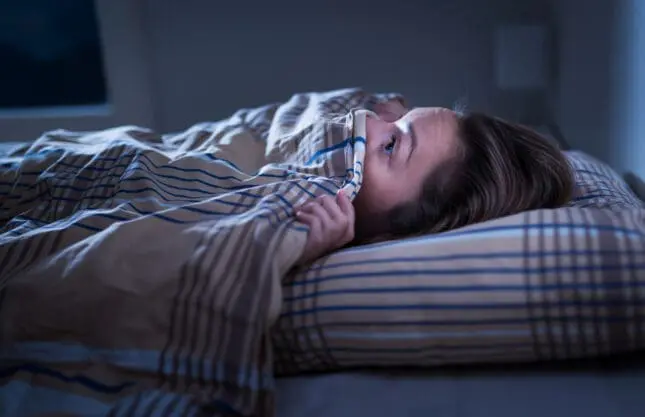Many of the parents I see in my clinical practice are telling me about the nightmares their children are having. One client in particular was concerned about his young son. “My four-year-old is waking up every night in tears,” he explained. When he asked what was wrong, his son replied that he was scared: “Daddy, it’s dark. It’s too dark.”
Although his son’s response might seem nebulous at first, my client understood what he was saying all too well. This young child is not alone in finding the world too dark: given the wildfires, Covid variants, hurricanes, droughts, earthquakes and periods of social unrest that abound these days, the world can feel like a scary place. For many of us, our children are especially vulnerable and sensitive to the possibility of danger. As we send them back to school, either with or without masks, it’s natural to be worried.
In fact, children are not the only ones having bad dreams right now. “I’m having nightmares, too,” my client told me. “I have a recurrent dream that there is a black fog approaching that is trying to suffocate us.” He laughed and shook his head on the Zoom screen. “Guess that doesn’t need much interpretation.”
As parents, as clinicians, what can we do when the world is too dark? How can we comfort our children and ourselves when we feel caught in a nightmare?
Starting with self-compassion is a good place to begin. If we step back and think about what researchers call “common humanity,” we realize that we aren’t alone with our anxiety. Right now, there are thousands and thousands of people who share our worries. Fred Rogers, the creator of the TV show Mr. Rogers’ Neighborhood, was a master at soothing the fears of children. Even during a disaster, he told us in his calm voice that there are always people who come to the rescue. “Look for the helpers,” he advised. “There are always helpers.”
My client found some consolation in these words. I also told him about the mindfulness and compassion research that shows that we actually feel better when we take an active role in the world and help others. We brainstormed about what he could do that might work for his family. He is someone who likes to feed others and finds cooking to be soothing and relaxing. On the weekends, he started cooking with his family and bringing food to a local soup kitchen where he and has children helped feed the hungry. “It makes us all feel less helpless, and what is interesting is that my son is sleeping better on the days we go,” he told me. “And thinking about the Mr. Rogers quote was inspiring. I liked the idea of being one of the helpers. It fits with the values that my parents taught us when we were growing up.”
And there are things we can do in the middle of the night to illuminate dark times. Practices with light are found in almost every spiritual tradition. The following is a simple meditation that can comfort your child at 4am, or whenever you need to help bring “light” to difficult situations or feelings. It is also a peaceful way to begin the day, or when we need to “reset” after a difficult encounter. It can be done together, or when you need solace individually, and only takes three to five minutes.
1. Imagine that you’re sitting and watching a beautiful sunrise with a wide spectrum of soft, luminous colors. As the sun rises over the horizon, feel it gently warming and illuminating the body: at first the face and eyes, then the neck, chest, arms, torso, pelvis, legs and feet.
2. If it feels comfortable, allow the soft light to enter your body, filling it with a golden glow. Feel the light touching the dark or arid places within yourself. Let it radiate to any place where you hold pain or sorrow.
3. Let the light fill your entire body, touching your bones, your muscles, your internal organs, veins, arteries. Imagine your entire being sparkling and radiating light. See if your body can relax or soften, releasing any place where you might be clenching or holding tension—your fists, your stomach, your jaw.
4. Rest in this light for few moments. If you like, let yourself become, as the Buddha said, “a lamp unto yourself.”
5. Imagine that you can allow this radiance to spread to those in your family, your friends and loved ones, to those in your neighborhood, your community, your state or country, and finally throughout the world.
When you’re done, look around. Some people feel that things around them look just a little bit brighter, and they often feel a little lighter as well. Try it.
***
Photo © iStock/Tero Vesalainen
Susan Pollak
Susan M. Pollak, MTS, EdD, is a psychologist in private practice in Cambridge, Massachusetts. She is a longtime student of meditation and yoga who has been integrating the practices of meditation into psychotherapy since the 1980s. Dr. Pollak is cofounder and senior teacher at the Center for Mindfulness and Compassion at Harvard Medical School/ Cambridge Health Alliance and was president of the Institute for Meditation and Psychotherapy from 2010 to 2020. Dr. Pollak is a co-editor of The Cultural Transition; and a contributing author of Mapping the Moral Domain; Evocative Objects; and Mindfulness and Psychotherapy, 2nd Edition. She is the co-author of Sitting Together: Essential Skills for Mindfulness-Based Psychotherapy and the author of Self-Compassion for Parents: Nurture Your Child by Caring for Yourself. She writes the popular blog, The Art of Now for Psychology Today, and is a frequent contributor to the Ten Percent Happier App. Her website is, https://www.drsusanpollak.com/













